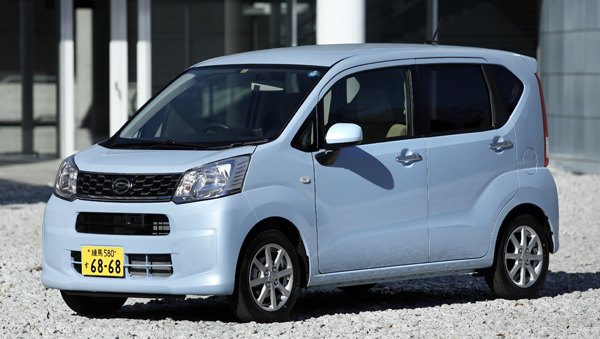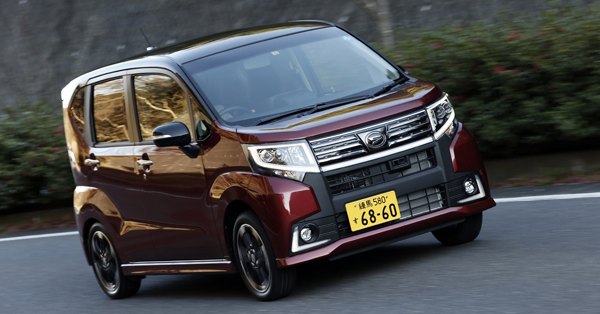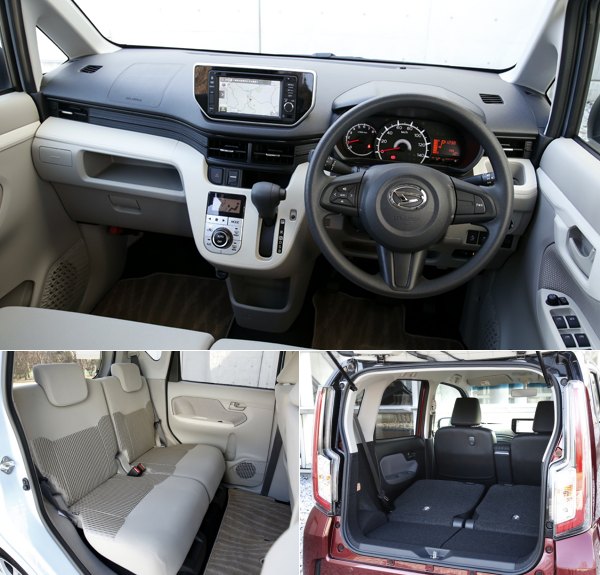Published
on 9
Jan 2017
|
All rights reserved.
|
|
|
 |
|
|
|
Following the
footprints of Suzuki Wagon R, the tall-body Daihatsu Move ran neck to
neck with the Suzuki at the top of the domestic K-car sales chart since
the mid-1990s. In recent years, the market trend shifted towards even
taller MPV-style K-cars like Honda N-Box and Daihatsu Tanto. As a
result, sales of both Move and Wagon R decreased a lot. However, they
still contribute to significant numbers, so it is still vital to keep
them fresh and competitive. The current generation Move was launched at
the end of 2014 as a 2015 model. Amazingly, it was just 2 years after
the last generation. Why did its predecessor live so short? Because
Daihatsu found its packaging was uncompetitive – the exterior design
was slightly dull, the interior looked outdated and low in quality. The
handling was okay but the ride quality fell behind the competition, so
did the fuel economy. This time around, Daihatsu kept the existing
platform but repackaged the car inside and outside, reworked its body,
suspension and aero to realize the potential of the platform. The
result is respectable.
Unsurprisingly, the new Move keeps hard points and therefore all key
dimensions unchanged, including the 2455mm wheelbase. The new body uses
more high-strength steel in its construction thus it is stiffer,
especially at the floorpan, yet 20 kg lighter. Nevertheless, some
weight is added back by reinforcing the suspension mounting, new shock
absorbers and upgrade of equipment, so the whole car actually gains 10
kg.

Move Custom
|
|
|
|
Outside, although the profile is unaltered, changes to the
styling are
obvious. It uses more recesses and crease lines and more angular
geometry to deliver a stronger sense of character, even though I think
it gets overcomplicated. It also looks larger than before, more like an
MPV. This is achieved by using a horizontal shoulder line instead of
the gently rising one on the old car. The side effect is the reduction
of side glass area hence sense of openness in the cabin. Rear quarter
visibility is hampered a little by the kick at the C-pillar. The new
pseudo grille at the nose section of bonnet adds further to the sense
of MPV. Upmarket version Move Custom looks even closer to Japanese
luxury MPVs, thanks to the heavy dose of chrome, the big mask grille
and LED-heavy headlamps. To me, it looks quite outrageous.
Thanks to standard rear spoiler, tweaks to aerodynamics and revised
powertrain patterns, fuel economy is improved a bit, if not good enough
to match Suzuki Wagon R with mild hybrid system.
Inside, the changes are more positive than the outside. While the
dashboard is built on the existing architecture, it is finished in
better quality plastics (still hard, but properly grained and colored).
A touchscreen is added above the center console, while the new
instrument is illuminated. Cabin space is identical to the old car’s,
which is excellent for its size. With the rear seat slid rearward, the
car is capable to take four six-footers with ease, thanks to plenty of
legroom and headroom. The front seats have a larger backrest for better
support. The rear seat remains too flat and hard for long journey
comfort though. As before, the rear seat is 50/50-split and can slide
and fold independently. Unfortunately, in a bid to cut cost, the rear
seat no longer descends when folded, thus there is a step in the load
bay. To reduce the step, Daihatsu lowered the rear seat by 10mm, but
this in turn hurt sitting comfort as the seat is mounted too low.
 |
|
|
|
The car keeps using the existing 3-cylinder naturally aspirated engine
with 52hp. Its maximum torque needs as high as 5200 rpm to realize, so
performance is poor. Turbocharged version is much better if you don’t
mind to pay more for purchasing and fuel. Its peak torque arrives at
3200 rpm (800 rpm lower than last gen), and the magnitude is much
stronger. As you don’t need to squeeze the engine as hard in overtaking
or uphill, refinement is improved. There is now a Power mode which
alters the engine and CVT mapping to help dealing with those
situations.
On the road, the most obvious improvement is ride and handling. The
stiffer chassis and tweaked suspension pay off here, resulting in
improved directional stability and a firm but more composed ride. As
before, the front and rear anti-roll bars keep body roll well checked
in corner, at least for a car this tall, but now the roll rate is more
progressive. Hit a mid-corner bump and the suspension soaks up without
bouncing off the ground. As a result, the car feels more secured and
matured, more like a B-segment car than a K-car. Its ride and handling
balance is better than Wagon R, which feels lighter and more fragile.
However, despite of the model changeover, sales of the Move continued
to
decrease in 2015 and 2016, even though it dropped less than Wagon R.
The golden years of Move seems unlikely to
return in the new market trend.
|
Verdict:    |
|